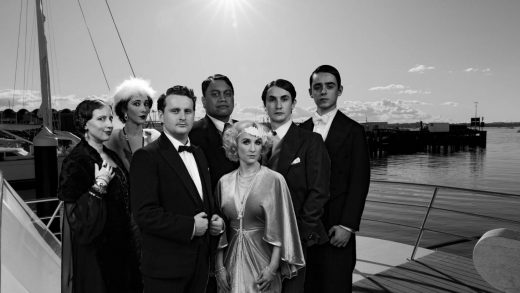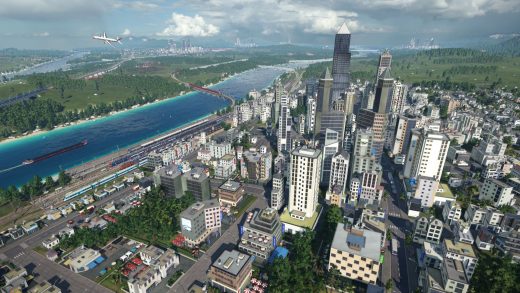
Mark Reason is a sports columnist for Stuff
OPINION: Remember what happened at the last Rugby World Cup when the All Blacks demolished Ireland 46-14 in the quarterfinals. The country gorged on the world’s respect and became sick on expectation. Then it all fell apart to an England side who “monstered” New Zealand, to borrow Italy coach Kieran Crowley’s description of the weekend’s 96-17 shellacking.
So if New Zealand don’t want to get monstered again, then it is back to basics for the rest of the tournament. They need to learn their ABCs again because, despite the encouraging scoreline and the huge performance of the forwards, all was far from well against Italy.
A is for attitude
A is for attitude and aggression. It will not have escaped the notice of the top sides that New Zealand’s defence still floundered on occasion against a team which was being battered up front. It seemed that Scott McLeod’s defence still doesn’t know whether to hold or rush. As a result it remains extremely porous.
To put this into context New Zealand have conceded an average of 20 points a match over the previous 12 months. During the same time span South Africa average 13 and Ireland 15. In their previous five games, South Africa have averaged eight points conceded a match. New Zealand average 20. Over the whole 12-month span, only one team has scored 20 points against Ireland. Eight teams have scored 20 points or more against New Zealand.
David Rogers/Getty Images
Ardie Savea charges on against Italy.
You can see where this is going. Historically, defences go a long way toward winning World Cups. New Zealand won in 2011 because their defence only conceded seven points in the final. It was both superbly coached and contained thinking players who could adapt to situations.
Conrad Smith, who was watching from the stands as New Zealand trounced Italy, is the perfect example of a guy who knew when to push and when to hold. It is hard to remember him ever getting caught out in the way that Rieko Ioane did for Italy’s first try.
And this is part of McLeod’s problem. When New Zealand’s defence was passive in the first half, Italy were able to eat up quite a few metres and exploit the space. But when New Zealand brought more line speed in the second half, with Codie Taylor and Richie Mo’unga often pushing up hard, mistakes were made.
Defence requires just as much skill as the best attacking sidestep. The world’s best rush defences depend on very skilful defenders being able to adapt to changing pictures. Ioane is not the world’s best in this regard. His pace is invaluable when New Zealand have to drift hard to the outside, and he has made some quite outstanding individual plays. But he can get stood up, as he did for Italy’s first try.
And when teams get on their outside, New Zealand have to scramble. But Beauden Barrett at fullback is not as quick or as young or as brave as he was five years ago. When Italy scored their second try, Barrett picked up the danger from his position on the far touchline.
But he was knackered. It took Beaudy, head lowered like a carthorse, 18 seconds to cover the 70 metres from touchline to touchline. And when he got there, he was so exhausted that Italy’s wing spun out of his tackle with ease. It makes you wonder whether he can go the full 80 minutes of the type of rugby that New Zealand want to play.
These will not be small problems when New Zealand come up against the best, so they have to sort them out now. They need to bring more aggression, but their attitude also has to be spot on. Four years ago, Mo’unga’s defence was a weakness, but he has worked and worked on it to become one of the best in the team. His mates in the backline need to match those standards.
B is for bench
It will be interesting to see which way Ian Foster goes against the big sides. I suspect he will stay with the 5-3 split and not attempt to emulate South Africa’s 7-1 bomb squad. But around that 5-3 split there are decisions to be made.
Against Italy, some of Foster’s best scrummagers were on the bench and when they came on, they took Italy’s scrum apart. It will give Foster pause for thought. Does he start with his best scrummaging front row, or does he bring them on for impact as South Africa are sometimes wont to do?
Cameron Spencer/Getty Images
Damian McKenzie gave coach Ian Foster food for thought against Italy.
Foster also has to decide his backfield split. Cam Roigard is surely now the backup half back and Anton Lienert-Brown covers midfield, because there are no options to go there from the starting players on the pitch. But does Foster go for Leicester Fainga’anuku as his third back or Damian McKenzie?
Fainga’anuku gives him power, McKenzie gives him pace. McKenzie may have swung the argument against Italy and could be the new super sub in the way that Beaudy was when Aaron Cruden used to drive the team for the first 60. It’s a good choice to have and may even vary according to the opposition.
C is for captain
This is a huge decision and may be one that Foster finally has to grasp after four obstinate years. Sam Cane has an ongoing back issue which may be exacerbated by stress. He also still gives away important penalties, and he struggles with referees – as we saw again against South Africa at Twickenham when he received a yellow card.
The former All Blacks coach Steve Hansen said the other night with regard to captaincy: “If you’re not actually delivering yourself, your words have no meaning.”
Hannah Peters/Getty Images
Sam Cane celebrates a Dane Coles try against Italy.
It is hard to hear that and not compare Ardie Savea with Cane. It is a while since Cane delivered consistently and there are too many yellow cards against him. It is all looking to be a bit overwhelming, witness when Cane suffered what Foster called “a bit of dropsy with his hands” against Italy. Hansen also observed that Cane still needs game time.
Furthering the case for Savea to continue in the role is the balance that Dalton Papali’i brings to the backrow. The game defining success of the All Blacks lineout variations against Italy – and I hope they haven’t revealed too much ahead of bigger games – owed a huge amount to Papali’i’s power and hands. It was no coincidence that Savea was man of the match with Papali’i and Shannon Frizell alongside him.
It is not a slight on Cane to move him to the bench. The team comes first, and the captain is nowhere near the top of his game. Sometimes the captain is so huge, that you patch him up and get him on the pitch as the All Blacks did with Richie McCaw in 2011.
But sometimes the alternative presents too compelling a case. New Zealand also has precedent with this route. In 1987, captain Andy Dalton pulled his hamstring ahead of the tournament. He was fit to come back from the quarterfinals, but the selectors stayed with his hooker replacement Sean Fitzpatrick and David Kirk remained as captain.
There is no room for sentiment when it comes to winning the big tournaments. Come the quarter-final next Sunday morning (NZT), Savea needs to stay in charge and Papali’i needs to continue to start. The question is, do Foster and his fellow selectors acknowledge that need?


